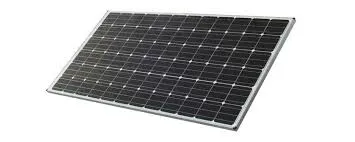10kw inverter off grid
Understanding 10 kW Off-Grid Inverters Efficiency and Applications
In the burgeoning field of renewable energy, off-grid systems have gained considerable attention for their potential to provide sustainable power solutions, especially in remote areas. One of the key components of these systems is the inverter, particularly the 10 kW off-grid inverter. This device plays a pivotal role in converting direct current (DC) generated from solar panels into alternating current (AC), which is required for most household appliances and tools.
What is a 10 kW Off-Grid Inverter?
A 10 kW off-grid inverter is designed to handle an output power of up to 10 kilowatts, making it suitable for medium-sized homes, cabins, or small businesses that rely on standalone solar power systems. Unlike grid-tied inverters, off-grid inverters do not connect to the public electricity grid. Instead, they operate independently, relying solely on stored energy from batteries charged by solar panels.
Key Features and Benefits
1. Energy Independence The most significant advantage of using a 10 kW off-grid inverter is energy independence. Users can generate and utilize their own electricity, reducing reliance on traditional utility services and protecting against rising energy costs.
2. Versatile Applications These inverters are versatile in terms of application. They can be used in residential setups, isolated campsites, RVs, and even for small industrial operations. This makes them an ideal choice for individuals or businesses seeking sustainable energy solutions.
3. Built-in Features Many modern 10 kW off-grid inverters come equipped with features such as automatic switching between modes, power factor correction, and integrated battery management systems. These features enhance performance efficiency, prolong battery life, and ensure seamless energy supply without manual intervention.
10kw inverter off grid

Efficiency Considerations
Efficiency is a critical factor when selecting an off-grid inverter. The efficiency of a 10 kW off-grid inverter typically ranges from 90% to 95%, meaning that a significant portion of the energy generated is effectively converted for use. To maximize efficiency, it’s essential to pair the inverter with compatible solar panels and batteries, ensuring optimal performance and longevity.
Installation and Maintenance
Installing a 10 kW off-grid inverter requires careful planning. It should be located in a well-ventilated area to prevent overheating. Furthermore, aligning the inverter with the capacity of the battery bank and solar array is crucial for achieving the desired performance. Maintenance is relatively low; however, regular checks on connections, battery health, and inverter functionality will help ensure longevity and reliability.
Environmental Impact
Choosing a 10 kW off-grid inverter contributes positively to environmental sustainability. By harnessing solar energy, users can significantly reduce their carbon footprint, decrease dependence on fossil fuels, and promote the use of renewable energy sources.
Conclusion
The 10 kW off-grid inverter is an essential component of a reliable and efficient off-grid power system. With its ability to provide energy independence and support a sustainable lifestyle, this inverter meets the demands of modern living in an eco-friendly way. As more people and businesses seek to transition to renewable energy sources, understanding the role and functionality of off-grid inverters will be crucial in making informed decisions about energy consumption and sustainability. Investing in a 10 kW off-grid inverter not only promises energy savings but also aligns with the global shift towards greener energy solutions.
-
Unlocking Energy Freedom with the Off Grid Solar InverterNewsJun.06,2025
-
Unlock More Solar Power with a High-Efficiency Bifacial Solar PanelNewsJun.06,2025
-
Power Your Future with High-Efficiency Monocrystalline Solar PanelsNewsJun.06,2025
-
Next-Gen Solar Power Starts with Micro Solar InvertersNewsJun.06,2025
-
Harnessing Peak Efficiency with the On Grid Solar InverterNewsJun.06,2025
-
Discover Unmatched Efficiency with the Latest String Solar InverterNewsJun.06,2025







